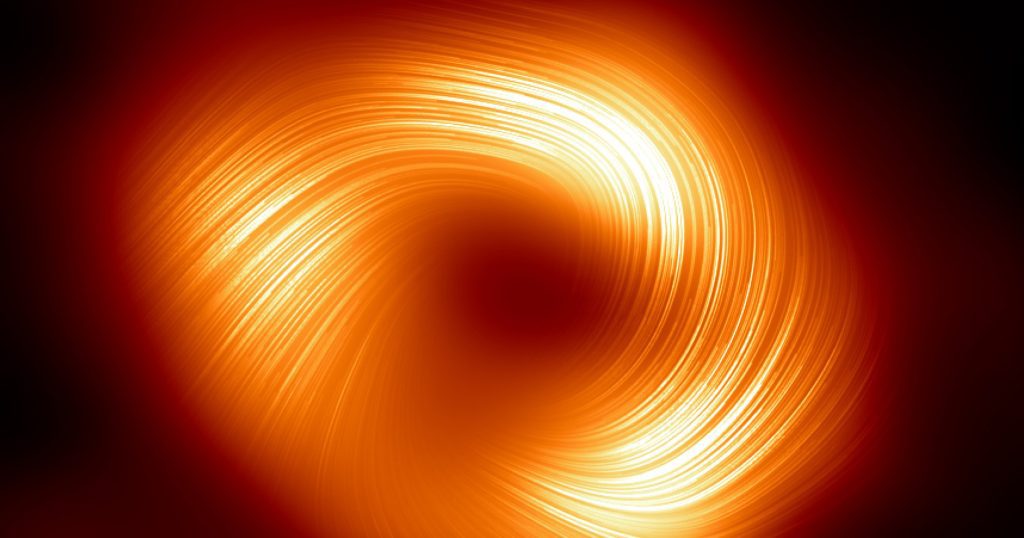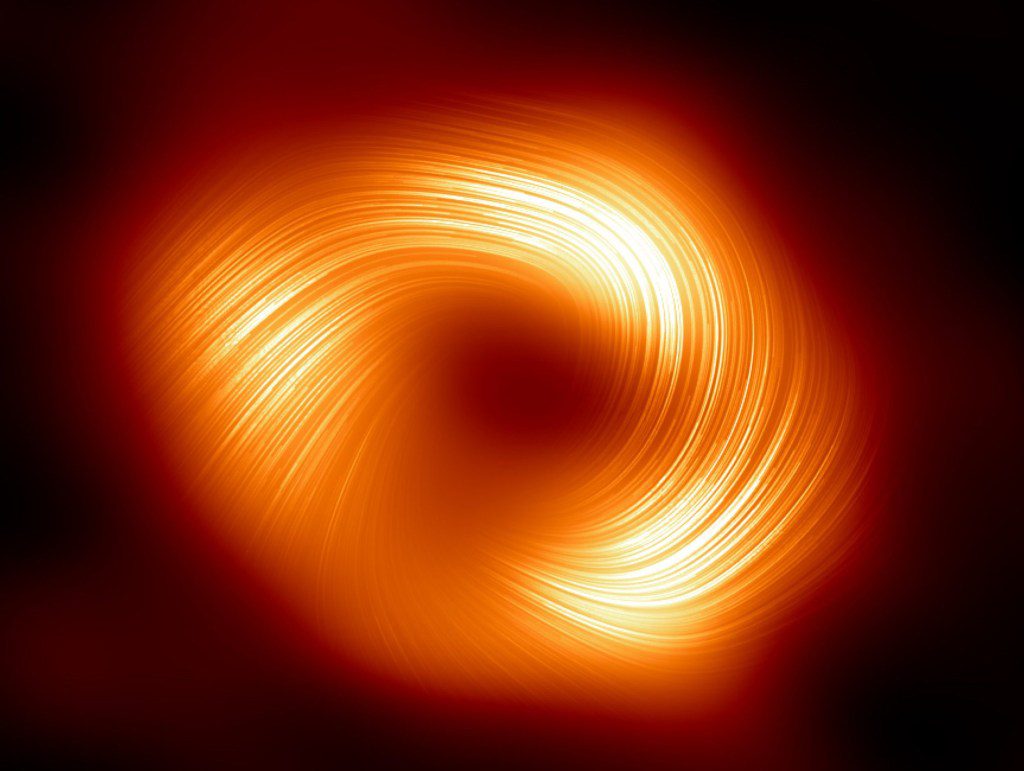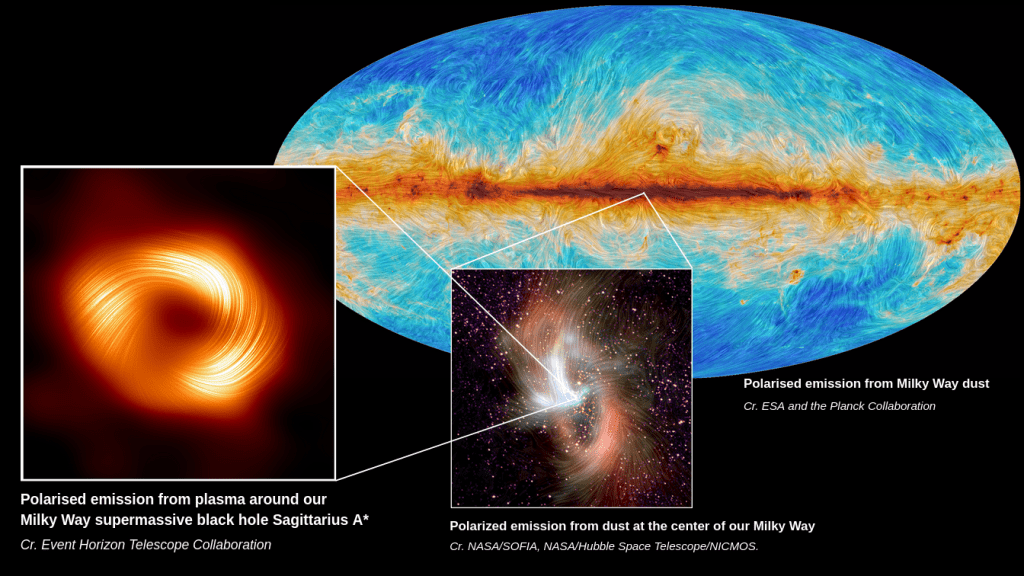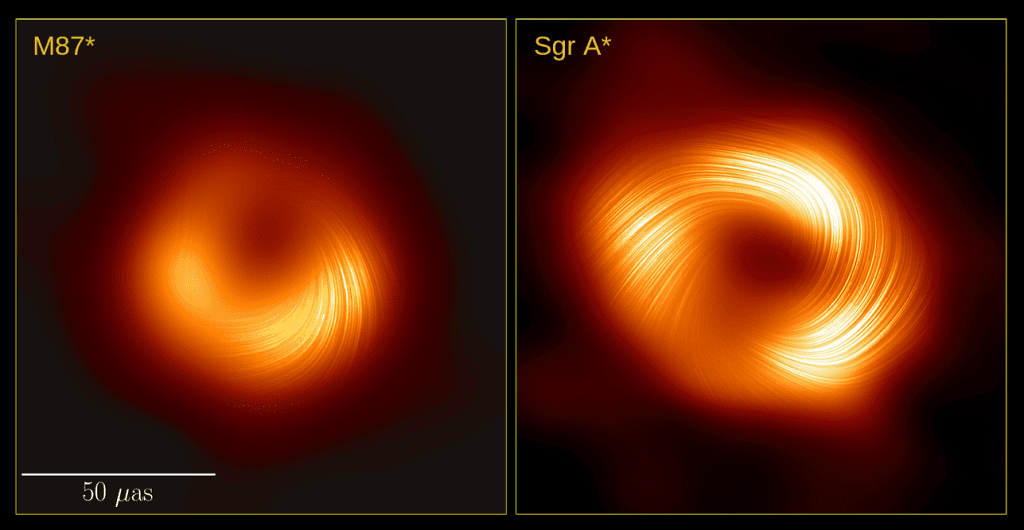The gigantic black hole at the center of our galaxy has been photographed with impressive new accuracy by astronomers – and it’s creating strong similar visual vibes to Lord Of The Rings vibes.
The fresh picture from the Event Horizon Telescope (EHT) collaboration displays the organized magnetic fields at the border of the gigantic black hole Sagittarius A* (Sgr A*), the wispy spiral resembling J R R Tolkein’s Eye of Sauron.
The team behind the image suggest it looks remarkably similar to the first black hole ever photographed, M87, indicating strong magnetic fields may be widespread in all black holes.
The picture was taken in polarized light to fully capture the extraordinary detail.
Research co-author Dr Ziri Younsi, from UCL and a member of the EHT collaboration, said: ‘It is very thrilling to see the first polarized images of the black hole in the heart of our galaxy.
‘These observations reveal much more information about the magnetic fields surrounding the black hole and will enhance our ability to model accreting black holes in the future.
‘It is incredible that the polarization structure of Sgr A* is so similar to that of the M87 black hole, which we know possesses an impressive relativistic jet.
‘This exciting new study hints at the possibility of a jet hiding near the event horizon of Sgr A*.’
Visible light is an oscillating, or moving, electromagnetic wave that allows us to see objects, while polarized light is light in which the electric and magnetic fields each vibrate in a single plane.
Despite being around us, human eyes cannot distinguish it from normal light.
Around the black holes, particles spinning around magnetic field lines emit a polarization pattern, allowing astronomers to observe what is happening in black hole areas in increasing detail and to map their magnetic field lines.
EHT project scientist Geoffrey Bower said: ‘Creating a polarized image is like opening the book after you have only seen the cover. Because Sgr A* moves around while we try to take its picture, it was difficult to construct even the unpolarized image.
‘We were relieved that polarized imaging was even possible. Some models were far too scrambled and turbulent to construct a polarized image, but nature was not so cruel.’
The black hole is around 27,000 light-years away from Earth and appears about the same size as a doughnut on the Moon.
We can’t see the black hole itself, because it is completely dark, but the new view captures light bent by the powerful gravity of the black hole, which is four million times more massive than the Sun.
The EHT collaboration involves more than 300 researchers from Africa, Asia, Europe and North and South America, and links eight telescopes around the world to create a virtual Earth-sized telescope.
The team is working to capture the most detailed black hole images ever obtained by creating a virtual Earth-sized telescope.
The Atacama Large Millimetre/submillimetre Array (ALMA), in which the European Southern Observatory (ESO )is a partner, and the ESO-hosted Atacama Pathfinder Experiment (APEX), both in northern Chile, were part of the network that made the observations, conducted in 2017.
The findings are published in The Astrophysical Journal Letters.












